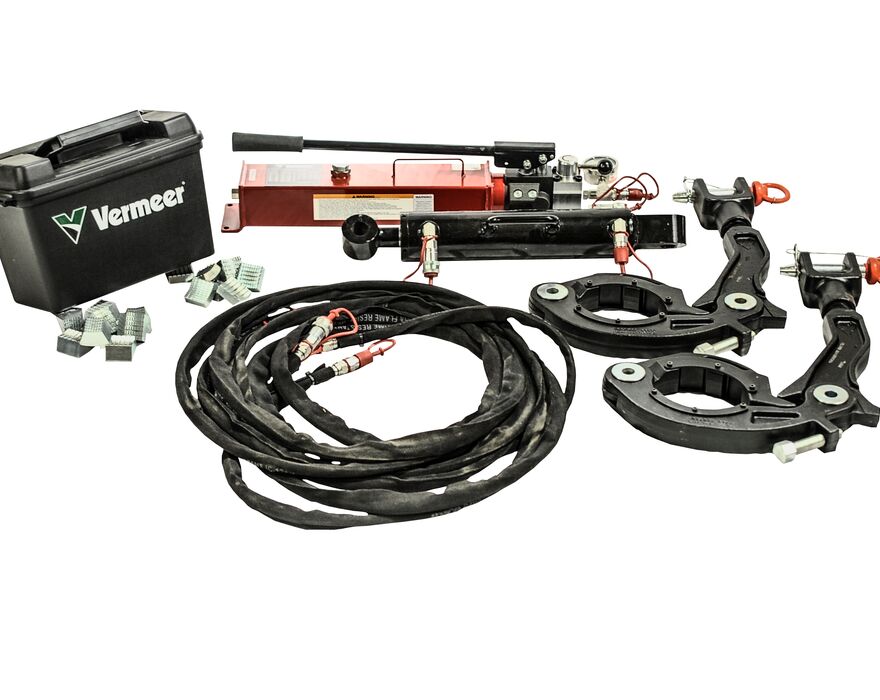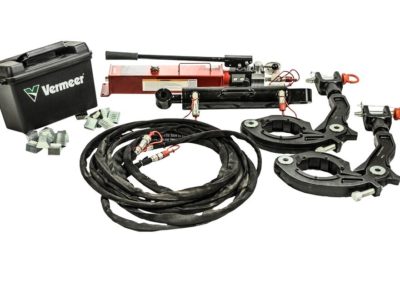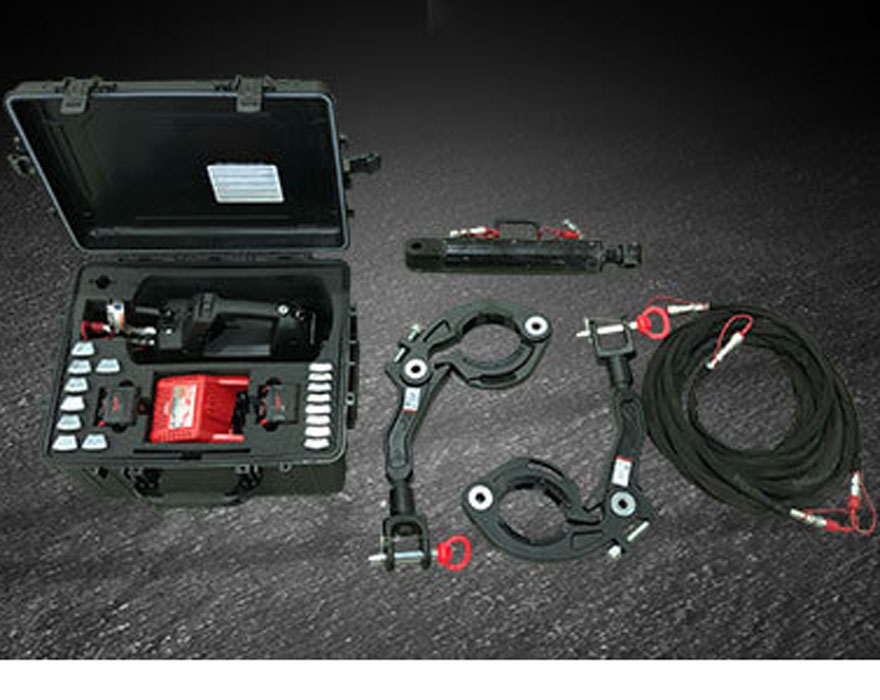Breakout tongs are an invaluable tool on today’s horizontal directional drilling (HDD) jobsites. They also have a multitude of uses in the field, including breaking and making up drill rod, breaking off both PDC and tricone bits from the front of dual rod housings and mud motors alike.
There are many breakout tong options and models to consider, but let’s focus on the Vermeer breakout tongs. There are two models available: The Vermeer PBD21500 breakout tongs, one of Vermeer’s latest innovations, and the Vermeer PBD11500 breakout tongs. We’ll explain what you need to know about them and how to set them up and use them. Refer to the breakout tongs operator’s manual for further information and safety messages.
What you need to know about Vermeer breakout tongs
Other breakout tongs options on the market require adjustment at several points on the system and may require the support of the second person to accomplish what you can get done with Vermeer breakout tongs.
“We designed our breakout tongs to be lightweight and for ease of use, so our customers can be efficient with their time on the job,” said Mitch Holcomb, Vermeer lifecycle product specialist.
Vermeer breakout tongs come in a heavy-duty carrying case, so everything is stored in one spot.
PBD21500 breakout tongs
On the PBD21500, the grip range of the tongs is based on which set of dies is used. There are two sets of dies that cover from 3.25-in (8.3-cm) all the way up to 5.75-in (14.6-cm) diameter. The dies are compatible with rod sizes 190 through 2.75 in.
The PBD21500 also comes with 20-foot (6.1-meter) hydraulic hoses, which allow the operator to keep the power pack out of the hole. The power pack includes two 28-volt Milwaukee batteries. On the side of the power pack, you’ll find a guide on how to adjust the pressures, based on the size of the pipe you’ll be breaking out.
Vermeer now offers two different PDC inserts, one for 2.875-in API and for 3.5-in API. Each size is sold separately from the base model and are compatible with the PBD21500.
The same goes for Tricone bits. There are three different sizes of bit breakers for Tricones: 5 in to 5.75 in, 5.75 in to 6.5 in and 6.5 in to 7.25 in. These bit breaker options replace one of the arms from the main unit and slide over the Tricone.
The PBD21500 is designed for use on the Vermeer D40x55 S3 horizontal directional drill up to the D100x140 S3 horizontal directional drill, and can handle 21,500 ft-lb, which is where it gets its name.
PBD21500MP manual pump breakout tongs
The PBD21500 is also available in a manual pump option instead of a power pack as part number PBD21500MP. These are commonly used on the exit side to break out the drill head and connect a reamer. The manual pump is a cost-effective option for those that don’t mind doing it by hand.

PBD11500 breakout tongs
On the PBD11500, the grip inserts range from 1.88 in to 3.75 in (4.8 cm to 9.5 cm). This has a lot in common with the PBD21500, but is designed for use on D40x55 S3 horizontal directional drills and smaller.
How to set up the PBD21500 breakout tongs
To set up the PBD21500 breakout tongs, follow these steps:
- Determine the diameter of the rod or the head that you’re breaking off and then select the corresponding die.
- Use an Allen wrench to open the die inserts on the arms.
- Insert the dies in the slots and re-tighten the bolts.
- To set up the arms, loosen the retaining bolt front of each arm to allow it to unfold.
- Then wrap the arm around the pipe.
- Fold the arm back over itself and tighten the retaining bolt once again
- To set up the piston and power pack with the hoses, slide the piston into place and add both attachment points on the arms.
- Then attach the 20-foot (6.1-meter) hydraulic hoses to the power pack and the hydraulics cylinder.
- To calibrate the power pack, identify your thread’s makeup torque, match that with the graph on the side of the power pack and then set your pressure.
- Follow the operating instructions found in your machine’s operator’s manual.
In this video, Vermeer product specialists share how to use and get the most out of the PBD21500 breakout tongs:
For more information about Vermeer breakout tongs, contact your local Vermeer dealer today or visit Borestore.com to purchase the tools you need.
Always refer to the product’s operator’s manual for safety messages and further instructions. Vermeer Corporation reserves the right to make changes in engineering, design and specifications; add improvements; or discontinue manufacturing at any time without notice or obligation. Equipment shown is for illustrative purposes only and may display optional accessories or components specific to their global region. Please contact your local Vermeer dealer for more information on machine specifications.
Vermeer, the Vermeer logo, Equipped to Do More and BORESTORE are trademarks of Vermeer Manufacturing Company in the U.S. and/or other countries. Milwaukee is a trademark of Milwaukee Electric Tool Corporation. © 2022 Vermeer Corporation. All Rights Reserved.

